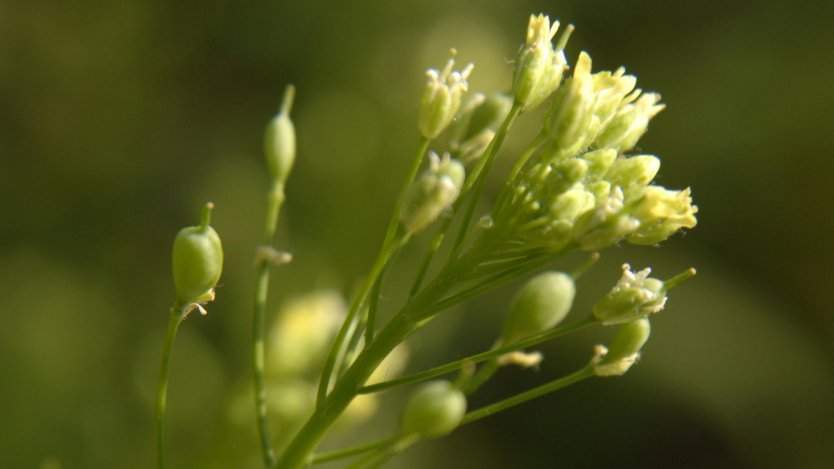In the kitchen as of late, I’ve switched out my vegetable oil in favour of camelina oil, a Saskatchewan product made by Three Farmers in Saskatoon. The company's founders created the company after discovering the camelina sativa plant at a farming seminar, which brings a once popular but now forgotten oil back to our pantries.
Camelina oil was quite ubiquitous from the 16th century until the 1940s, mainly because it was a good oilseed crop that endured harsh weather conditions.
"Camelina sativa originated in Northern Europe where climate is quite similar to that of Saskatchewan,” says Three Farmer’s CEO Natasha Vandenhurk. “It is a very hardy crop that is drought resistant and cold tolerant.”
The oil fell out of vogue with the onset of the industrial age, because food industrialists interested in mass production at a low cost found that its high level of polyunsaturated fats made it harder and more expensive to hydrogenate into margarine. Why use a good, natural oil when you can just pump chemicals into things to make them cheaper and easier to produce?
However, the pendulum of food culture is swinging back towards more natural, healthy foods, and camelina is slowly picking up speed in kitchens because of its health benefits, impressing even Arlene Dickinson of Dragons' Den. It’s not only high in vitamin E, but it is replete with essential fatty acids that help reduce instances of everything from cardiovascular disease to diabetes; ironic, considering it was these acids that made it originally unmarketable.

“Camelina oil has a balanced fatty acid ratio between Omega-3, Omega-6, and Omega-9,” explains Vandenhurk, “making it one of the healthiest cooking oils on the market. We began in the ‘niche’ market of specialty and health food... We know this type of customer is looking for a quality product like camelina and will understand the attributes of the product, as well as the advantages of using this oil instead of refined and highly processed cooking oils.”
I’ve used the oil in a variety of recipes (and for bread dippin’!) and it feels much less cloying than vegetable oil. It has a smooth taste with an almost buttery finish. In fact, just the other day, I made a Cuban turkey and sweet potato stew, and substituted camelina oil for the vegetable oil I’d normally use. It was obviously more of a supporting player in a dish with bold flavours like Cuban stew, but it was a welcome addition to the recipe, adding notes of flavour and reducing the "greasiness" of the turkey.
“Three Farmers camelina oil carries a really lovely, light, nutty and asparagus-like flavour to it,” says Vandenhurk.
Though the oil is carried in more than 800 stores across Canada (with three flavours: original, roasted onion and basil, and roasted garlic and chili), it is still an uphill battle for the company to put camelina back on people’s radar.
“The topic of healthy oils is a big subject in the media right now, and it seems camelina oil is missed,” notes Vandenhurk. “This is due to lack of awareness of its availability. Camelina oil can compete directly with any oil on the market and come out on top, in terms of health and function.”













